Mastering Candlestick Patterns: Test Your Trading Knowledge and Build Expertise
Welcome, aspiring traders and seasoned market participants alike. We are about to embark on a journey deep into the visual language of the financial markets – Japanese candlestick patterns. For centuries, traders have used these powerful visual tools to decipher market sentiment, predict potential price movements, and inform their trading decisions. Think of them as market whispers, conveying messages about the ongoing battle between buyers and sellers.
In the world of technical analysis, mastering the interpretation of these patterns is not merely an academic exercise; it is a fundamental skill set that can significantly enhance your ability to navigate the complex terrain of stocks, commodities, Forex, and cryptocurrencies. Whether you are just starting out or looking to refine your existing strategy, a solid understanding of candlestick patterns is indispensable.
- Understanding candlestick patterns assists in making informed trading decisions.
- Analyzing market sentiment allows for better anticipation of price movements.
- Mastering these skills enhances confidence and trading performance.
But how do you truly master something as nuanced as reading patterns on a chart? It requires more than just memorization. It demands understanding the underlying psychology, recognizing patterns in real-time, and knowing how to apply them in conjunction with other analytical tools. This is where active learning comes into play, and educational resources like targeted quizzes and comprehensive learning platforms become your most valuable allies. We’ll explore how understanding the core mechanics of candlesticks, delving into specific pattern types, and rigorously testing your knowledge through interactive methods can accelerate your path to trading proficiency.
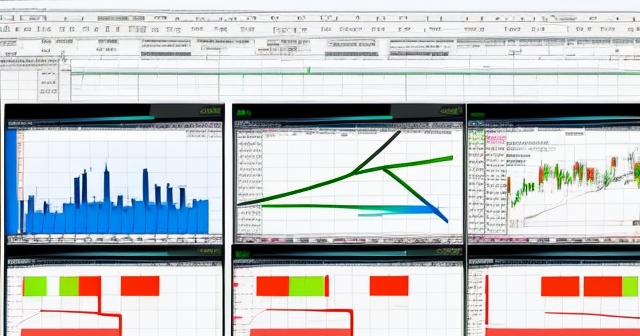
Deciphering the Candlestick Code: The Anatomy of Price Action
Before we delve into complex patterns, let’s first understand the building block: the single Japanese candlestick. Originating in Japan in the 17th century for rice trading, these charts offer a richer visual representation of price action than simple line charts. Each candlestick tells a story about price movement over a specific period, whether that’s one minute, one hour, one day, or even one month.
Every candlestick is formed using four key pieces of price data: the Open, the High, the Low, and the Close (often abbreviated as OHLC). Let’s break down what these mean and how they are visually represented:
| Candlestick Component | Description |
|---|---|
| The Body | The wide or rectangular part representing the range between the opening and closing prices. |
| The Shadows | The thin lines extending above and below the body showing the high and low prices during the period. |
| The High and Low | The very top of the upper shadow indicates the highest price; the bottom of the lower shadow is the lowest price reached. |
So, a tall green candle with short shadows indicates strong buying pressure and the close was significantly higher than the open, with price staying mostly within that range. Conversely, a long red candle with long shadows suggests significant volatility and a substantial price drop from open to close, with prices temporarily moving even further in both directions before settling.
Understanding this basic anatomy is the first step. Each element – the length of the body, the color, and the length of the shadows – provides clues about the strength and direction of the market participants during that specific time frame. For instance, a very short body suggests indecision, while a long body indicates strong directional movement.
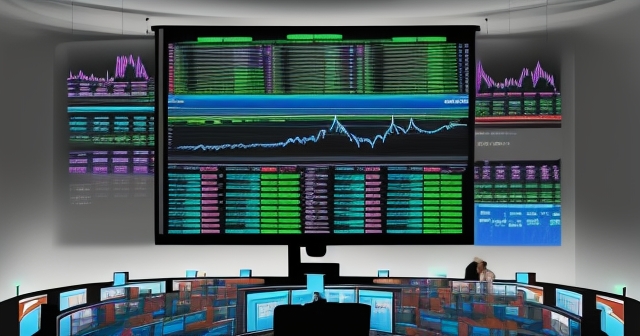
Beyond the Single Candle: Recognizing Foundational Patterns
While single candlesticks offer immediate insights, the real power of this analysis lies in recognizing *patterns* formed by sequences of two or more candles. These patterns often provide more reliable signals about potential trend continuation or, crucially, trend reversals. Let’s explore some fundamental patterns that every technical trader should know.
One of the simplest, yet most informative, patterns is the Doji. A Doji forms when the opening price and the closing price for the period are very close or exactly the same. Visually, it appears as a cross, inverted cross, or plus sign, with a very small or non-existent body. What does a Doji signal? It indicates market indecision. Neither buyers nor sellers were able to take significant control, and the price essentially finished where it started. The length of the shadows can still provide clues about the volatility within that period, but the core message is a stalemate.
The *significance* of a Doji is heavily dependent on where it appears in the chart. If a Doji forms during a strong trend, it can be a warning sign that the trend might be losing momentum and a potential reversal could be imminent. For example, a Doji after a long bullish rally suggests that buyers are no longer decisively in control, and sellers might be stepping in. Conversely, a Doji after a prolonged downtrend could signal that sellers are exhausting their pressure, and buyers might be considering entering.

Another important single-candle pattern is the Marubozu. This Japanese word means “bald” or “shaven head,” and that’s exactly what the candle looks like – it has no shadows. A bullish Marubozu (long green/white body) opens at its low and closes at its high, indicating strong, uninterrupted buying pressure throughout the entire period. A bearish Marubozu (long red/black body) opens at its high and closes at its low, showing relentless selling pressure. These are powerful trend continuation or breakout candles, suggesting dominance by one side of the market.
Then there are patterns like the Hammer (bullish) and Hanging Man (bearish). These have a small body near the top of the trading range, a long lower shadow (at least twice the length of the body), and little to no upper shadow. A Hammer, occurring after a downtrend, suggests that sellers pushed the price down significantly, but buyers managed to push it back up strongly before the close, indicating potential buying interest and a possible bullish reversal. A Hanging Man, appearing after an uptrend, shows that buyers struggled to maintain the high price, and sellers managed to push it back down significantly, suggesting potential selling pressure and a possible bearish reversal.
| Pattern | Meaning |
|---|---|
| Doji | Market indecision and potential reversal. |
| Marubozu | Strong buying or selling pressure with no shadows. |
| Hammer | Potential bullish reversal after a downtrend. |
| Hanging Man | Potential bearish reversal after an uptrend. |
The Power of Multi-Candle Sequences: Predicting Trend Shifts
While single candles like the Doji or Hammer provide clues, patterns formed by two or more consecutive candlesticks often offer stronger, more confirmed signals. These sequences capture the ebb and flow of the market battle over slightly longer periods.
Consider the Engulfing Pattern, a potent two-candle reversal signal. A Bullish Engulfing pattern occurs after a downtrend. The first candle is a small bearish candle. The second candle is a large bullish candle whose body completely ‘engulfs’ or covers the body of the first candle. This pattern signifies a dramatic shift in momentum: sellers were in control initially, but buyers entered with overwhelming force, pushing the price significantly higher and closing above the previous period’s open. It suggests a potential bullish reversal.
Conversely, a Bearish Engulfing pattern appears after an uptrend. The first candle is a small bullish candle, followed by a large bearish candle whose body completely engulfs the first candle’s body. Here, buyers were initially dominant, but aggressive selling pressure took over, pushing the price significantly lower and closing below the previous period’s open. This suggests a potential bearish reversal.
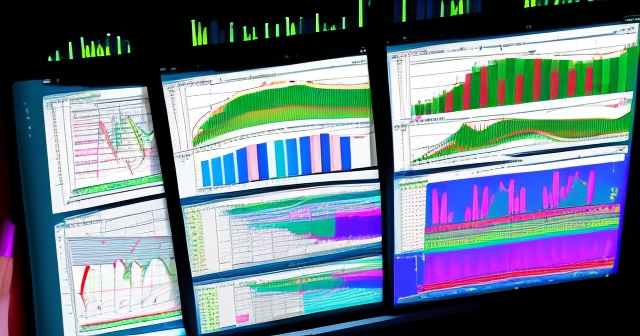
Another key two-candle pattern is the Harami (Japanese for “pregnant”). This is essentially the opposite of an Engulfing pattern. It occurs when a smaller candle (the “baby”) is contained entirely within the body of the preceding larger candle (the “mother”). A Bullish Harami (small bullish candle within a large bearish candle’s body, after a downtrend) suggests the selling pressure might be losing momentum as the price range tightens. A Bearish Harami (small bearish candle within a large bullish candle’s body, after an uptrend) indicates potential buying exhaustion. The Harami often signals indecision or a slowdown in the current trend, potentially preceding a reversal or a period of consolidation.
Moving to three-candle patterns, the Morning Star (bullish) and Evening Star (bearish) are significant reversal indicators. The Morning Star appears after a downtrend and consists of three candles:
- A long bearish candle (continuation of the downtrend).
- A small-bodied candle (bullish, bearish, or Doji) that gaps down below the first candle’s body, indicating indecision or a slight bounce.
- A long bullish candle that closes well into or above the body of the first bearish candle, showing strong buying power taking control.
This pattern visually represents the transition from bearish control, through indecision, to bullish dominance.
The Evening Star is the bearish equivalent, appearing after an uptrend:
- A long bullish candle.
- A small-bodied candle (bullish, bearish, or Doji) that gaps up above the first candle’s body, suggesting hesitation.
- A long bearish candle that closes well into or below the body of the first bullish candle, indicating sellers taking control.
These multi-candle patterns, especially when occurring at critical price levels, can provide high-probability trading signals. Learning to spot them accurately is a crucial step.
Identifying Nuance: Shadow Lengths, Context, and Other Patterns
Beyond the foundational patterns, understanding the nuance conveyed by candlestick shadows is vital. Long shadows indicate significant price rejection during the period. For example, a candle with a long upper shadow and a small body suggests that buyers tried to push the price higher, but sellers aggressively pushed it back down before the close. This can be a sign of potential resistance or selling pressure building.
Conversely, a candle with a long lower shadow and a small body indicates that sellers attempted to push the price lower, but buyers stepped in strongly, pushing the price back up. This points to potential support or buying pressure. Patterns like the Pin Bar are simply candles with very long shadows (or “pins”) and small bodies, often highlighting potential reversals at key levels.
Other notable single-candle patterns include the Inverted Hammer (bullish reversal, looks like an upside-down Hammer after a downtrend) and the Shooting Star (bearish reversal, looks like an upside-down Hanging Man after an uptrend). These, like the Hammer and Hanging Man, gain significant validity when found near support or resistance levels.
It’s crucial to remember that no candlestick pattern is 100% accurate in isolation. Their reliability increases dramatically when considered within the broader market context. What is the prevailing trend? Where is the pattern forming relative to key support and resistance zones? Is there significant volume accompanying the pattern? These are questions we must ask to confirm the signal.
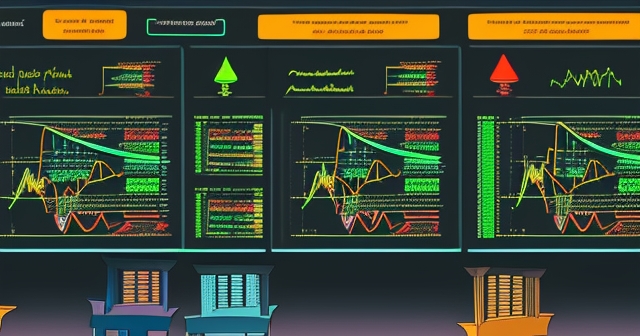
For instance, a bullish engulfing pattern appearing at a major support level after a significant downtrend is a much stronger signal than the same pattern appearing randomly in the middle of a choppy, directionless market. Similarly, a Doji at the very peak of a long rally, especially coupled with decreasing volume, carries more weight as a potential reversal signal than a Doji in a sideways market.
Connecting the Dots: Candlesticks Within Broader Technical Analysis
Mastering candlestick patterns is a vital piece of the technical analysis puzzle, but it is just one piece. To build a robust trading strategy, you must learn to integrate candlestick analysis with other technical tools and concepts. Think of it like building a house; candlesticks might be the bricks, but you also need the mortar (support/resistance), the framing (trend lines, channels), and the foundation (volume, indicators).
Support and Resistance Levels: These are price levels where the market has historically shown a tendency to pause or reverse. Candlestick patterns appearing at or near these levels significantly increase their probability of success. A bullish pattern at support suggests the level is holding and buyers are stepping in. A bearish pattern at resistance indicates the level is rejecting higher prices and sellers are defending it.
Trend Lines and Channels: These dynamic lines help define the direction and slope of a trend. Candlestick patterns that confirm a bounce off a trend line (in the direction of the trend) or signal a potential breakout or breakdown from a channel can be particularly powerful.
Volume: Volume is the number of shares, contracts, or units traded during a period. High volume accompanying a pattern, especially a reversal pattern, adds conviction to the signal. For example, a bullish engulfing pattern on high volume suggests strong buying conviction behind the move, making the potential reversal more likely. Low volume on a potential reversal pattern might suggest less conviction and a higher chance of failure.
Technical Indicators: Oscillators (like RSI, Stochastic) and momentum indicators can be used to confirm signals. For example, if a bullish engulfing pattern forms at support, and the RSI is simultaneously showing oversold conditions and turning up, this provides additional confluence supporting the potential upward move.
By learning to overlay candlestick analysis with these other tools, you create a more comprehensive picture of market dynamics. You move from simply identifying a pattern to understanding *why* that pattern is forming in that specific context, significantly improving the quality and reliability of your trading signals. This layered approach is a hallmark of experienced traders.
Test Your Knowledge: How Quizzes Accelerate Learning
Understanding the theory of candlestick patterns is one thing; recognizing them quickly and accurately under pressure in a live market simulation is another. This is where interactive learning tools, like well-designed quizzes and flashcards, become invaluable accelerators for your learning process.
A candlestick quiz isn’t just about rote memorization. The best quizzes are structured to test your knowledge at multiple levels:
- Basic Recognition: Can you identify a Hammer from a Hanging Man, or a Doji from a Marubozu, simply by looking at its shape?
- Definition Recall: Do you know the technical definition of each pattern and what elements (OHLC, body, shadows) form it?
- Interpretive Understanding: Can you explain what the pattern signals about market sentiment or potential price direction (e.g., indecision, continuation, reversal)?
- Contextual Application: Can you determine the *significance* of a pattern based on where it appears (e.g., at support/resistance, in a trend, in a choppy market)?
- Comparative Analysis: Can you differentiate between similar-looking patterns or understand why one might be a stronger signal than another based on its context?
Quizzes structured with multiple-choice, true/false, and even short-answer questions that present chart examples force you to actively recall information and apply your understanding. This process is far more effective than passively reading a book or watching a video. When you get an answer wrong, it immediately highlights gaps in your knowledge, allowing you to go back and review those specific areas. This targeted feedback loop is crucial for efficient learning.
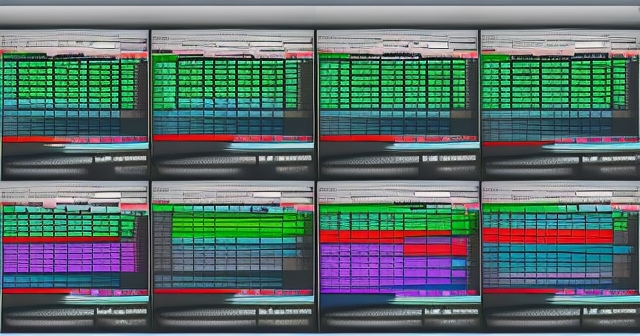
Furthermore, quizzes help simulate the speed required in real trading. While you won’t be answering multiple-choice questions when executing a trade, the mental exercise of quickly processing visual information and recalling its meaning trains your brain to recognize patterns faster on a live chart. Regularly testing yourself builds confidence and reinforces the information, moving it from theoretical knowledge to practical, ready-to-use skill.
Flashcards, like those found on platforms such as Brainscape (often available for trading topics including various candlestick patterns), offer a complementary learning method. They are excellent for rapid recall of definitions, pattern names, and basic meanings. Using a combination of quizzes for deeper application and flashcards for quick review provides a powerful one-two punch for solidifying your candlestick pattern expertise.
Applying Candlestick Analysis in Different Markets: Forex, Crypto, and Beyond
One of the great advantages of technical analysis, including candlestick patterns, is its versatility. The principles of supply and demand, buyer and seller psychology, and price action are universal across different financial markets. Therefore, the candlestick patterns you learn are applicable whether you are trading Forex pairs, cryptocurrencies, stocks, commodities, or even options and futures.
When applying candlestick analysis in Forex trading, you are looking at currency pairs (like EUR/USD, GBP/JPY) as the underlying asset. The patterns signal potential entry and exit points, trend continuations, or reversals in the exchange rate. The high liquidity and frequent price movements in Forex make candlestick analysis particularly popular among currency traders. Understanding how patterns form on different Forex time frames (from minute charts for scalping to daily/weekly charts for swing trading) is key.
If you’re navigating the dynamic world of cryptocurrency trading, candlesticks are equally relevant. Crypto charts, like Bitcoin (BTC) or Ethereum (ETH), also display price action using OHLC data, and the classic candlestick patterns often behave as expected. However, crypto markets can be significantly more volatile than traditional markets, which might lead to longer shadows or more dramatic body movements. Traders must be mindful of this inherent volatility and potentially adjust their interpretation or risk management accordingly.
| Market | Key Considerations |
|---|---|
| Forex | High liquidity, quick price movements, multiple time frames for strategy. |
| Cryptocurrency | Higher volatility, unique patterns, quick adjustments needed. |
| Stocks | Patterns point to company performance, economic factors play a role. |
For those interested in stock trading or investing in securities and other assets, candlestick patterns provide insights into the price dynamics of individual companies or indices. Analyzing patterns on stock charts can help investors identify potential turning points or confirm the strength of a trend. The principles remain the same: look for patterns at key levels, consider volume, and use them in conjunction with other analytical tools.
Regardless of the specific market you trade, the core skill of reading candlesticks remains foundational. The more markets you explore, the more you’ll appreciate the universal language of price action communicated through these historical charting techniques.
如果你正考慮開始進行外匯交易或探索更多差價合約商品,那麼 Moneta Markets 是一個值得參考的平台。它來自澳洲,提供超過 1000 種金融商品,無論是新手還是專業交易者都能找到合適的選擇。
Risk Management and Psychology: The Human Element in Pattern Trading
While recognizing candlestick patterns is crucial, it’s just one piece of successful trading. Two equally important, yet often underestimated, components are risk management and trading psychology. You can be a master pattern spotter, but without proper control over your risk and emotions, your trading journey will likely be challenging.
Risk Management: This is non-negotiable. Every trade you make, based on a candlestick pattern or any other signal, carries risk. You must determine how much capital you are willing to risk on any single trade (typically a small percentage, like 1-2% of your total trading capital). Setting a stop-loss order, a price level where you will automatically exit the trade to limit potential losses, is fundamental. Candlestick patterns can often help you determine logical places for stop losses – for example, slightly below the low of a bullish reversal pattern or slightly above the high of a bearish reversal pattern.
Position sizing is also critical. Based on your stop-loss level and the amount of capital you are willing to risk, you calculate the appropriate number of shares, contracts, or lots to trade. This ensures that even if the pattern fails and your stop loss is hit, your loss is within your predetermined comfort zone. Relying solely on pattern signals without incorporating stop losses and position sizing is akin to driving a car without brakes – dangerous and potentially catastrophic.
Trading Psychology: This encompasses your emotional state, discipline, and mindset when trading. Greed, fear, impatience, and overconfidence are powerful emotions that can sabotage even the best analytical skills. Seeing a perfect pattern might trigger excitement (greed) leading you to overlever or ignore your risk rules. Experiencing a losing trade might induce fear, causing you to hesitate on the next valid signal or cut winning trades too early.
Mastering trading psychology involves discipline – sticking to your trading plan, executing your signals when they appear (even if you’re nervous), and respecting your stop losses. It requires patience to wait for high-probability setups that align with multiple confirmations, rather than chasing every potential pattern you see. It demands humility to accept losses as part of the process and learn from your mistakes.
Your understanding of candlestick patterns should feed into your trading plan, but the execution of that plan must be guided by disciplined risk management and emotional control. Quizzes and educational resources can teach you the patterns, but only practice, reflection, and adherence to sound principles will help you master the psychological challenges of trading.
Building a Trading Plan Incorporating Candlestick Insights
How do you translate theoretical knowledge of candlestick patterns into practical trading success? You integrate it into a well-defined trading plan. A trading plan is your roadmap; it outlines your strategy, rules, risk parameters, and goals. Without a plan, you are likely to make impulsive decisions based on emotion or incomplete analysis.
Here’s how you can build a plan that effectively incorporates candlestick pattern analysis:
- Define Your Market and Timeframe: What instruments will you trade (Forex pairs, specific stocks, crypto)? What timeframes will you focus on (e.g., 15-minute, 1-hour, daily)? Your chosen timeframe will influence the patterns you look for and how quickly they develop.
- Identify Your Core Strategy: Are you a trend trader, a range trader, or a breakout trader? Candlestick patterns can support any of these styles, but understanding your overall approach helps you interpret the patterns’ significance. For example, trend traders might look for continuation patterns within a strong trend or reversal patterns signaling the end of a correction. Range traders might focus on reversal patterns at support and resistance boundaries.
- Specify Your Entry Criteria: What exact conditions must be met for you to enter a trade? This should include identifying a specific candlestick pattern *and* confirming it with other tools. For instance, “Enter long only if a bullish engulfing pattern forms on the 1-hour chart at a confirmed daily support level, with RSI below 30 and turning up.”
- Determine Your Exit Strategy: Where will you place your stop loss to limit potential losses? Where will you place your take-profit target? Again, candlestick patterns can help here. A common strategy is to place the stop loss below the low of a bullish reversal pattern. Take-profit targets can be based on subsequent resistance levels, a favorable risk-to-reward ratio (e.g., 1:2 or 1:3), or the appearance of an opposing reversal pattern.
- Outline Your Risk Management Rules: Reiterate your maximum risk per trade (e.g., 1% of capital) and your method for calculating position size based on your stop loss distance.
- Plan for Review and Adaptation: Your plan isn’t set in stone. Regularly review your trades based on your plan. Did the pattern work? If not, why? Were you disciplined in your execution? Journaling your trades helps identify what’s working and what needs adjustment.
Your trading plan should be a living document, refined through backtesting (analyzing historical data) and forward testing (practicing on a demo account) before risking real capital. Candlestick patterns provide the signals, but the trading plan provides the structure and discipline to act on those signals effectively and manage the inherent risks.
若你正在尋找具備監管保障且能全球交易的外匯經紀商,Moneta Markets 擁有 FSCA、ASIC、FSA 等多國監管認證,並提供資金信託保管、免費 VPS、24/7 中文客服等完整配套,是不少交易者的首選。
Leveraging Educational Platforms and Community Resources
The journey to mastering candlestick patterns and technical analysis is ongoing. The markets are constantly evolving, and new patterns, strategies, and tools emerge. Relying on comprehensive educational platforms and engaging with trading communities can significantly support your continuous learning.
Platforms like Babypips, often referenced for their structured approach to Forex and general trading education, exemplify the value of accessible, engaging content. Their “School of Pipsology” provides foundational lessons that cover everything from currency basics and trading vocabulary to the intricacies of technical analysis, including detailed sections on candlestick patterns, chart patterns, support and resistance, and indicators. This structured learning path is crucial for building a solid foundation.
Beyond lessons, these platforms often offer valuable resources like the aforementioned quizzes and flashcards. The Babypips “Candlestick Pattern Quiz” is a prime example of how interactive tools can test your recall and understanding. Other quizzes covering support/resistance, chart patterns, or even specific currency details help reinforce related concepts, ensuring you don’t learn candlestick patterns in isolation.
Flashcards, whether platform-certified sets or user-generated ones (like those found on Brainscape, covering everything from basic Forex terms to specific candlestick formations and their meanings), are excellent for quick, repetitive learning and memorization. Breaking down complex topics into manageable chunks for flashcard review is a proven study technique.
Engaging with trading communities, whether through forums or social media groups associated with educational platforms, provides another layer of learning. You can ask questions, share your chart analysis, receive feedback, and learn from the experiences of others. Seeing how different traders interpret the same patterns in varying market conditions can broaden your perspective and deepen your understanding.
The accessibility of educational content – through websites, articles, videos, podcasts, and interactive tools – means that the knowledge you need is readily available. Your commitment to seeking out these resources and actively engaging with them is the key differentiator in your development as a trader. Don’t hesitate to explore multiple sources and find the learning styles that resonate most with you.
Practice and Persistence: The Path to Mastery
Theory is essential, but practice is where true mastery is forged. Learning candlestick patterns is like learning a new language; you need to speak it frequently to become fluent. This means actively applying your knowledge, first in a risk-free environment, and then with carefully managed risk in live trading.
Backtesting: Before you trade with real money, spend significant time backtesting your strategy on historical data. Go back through charts, identify the patterns you’ve learned, and see how the price reacted afterward. Did the bullish engulfing pattern at support lead to a rally? How often did the bearish flag pattern result in a breakdown? Backtesting helps you understand the historical probability of different patterns working in specific contexts and refine your entry/exit rules.
Forward Testing (Demo Trading): Open a demo account with a reputable broker. This allows you to practice trading with virtual money in real-time market conditions. Implement the trading plan you developed, focusing on identifying and acting upon candlestick patterns according to your rules. Demo trading helps you get comfortable with your platform, practice execution speed, and observe how patterns unfold in live markets without risking capital. Treat your demo trading as seriously as you would real trading to build good habits.
Journaling: Keep a detailed trading journal. For every trade, record:
- The instrument and timeframe.
- The candlestick pattern identified and its context (e.g., at S/R, in a trend).
- Your entry and exit points.
- Your stop loss and take profit levels.
- The outcome (win or loss) and the amount.
- Your emotional state and any lessons learned.
Reviewing your journal regularly provides invaluable insights into your strengths and weaknesses, helping you refine your pattern recognition and execution.
Persistence: Trading is challenging, and you will inevitably face losses. Not every pattern will work out, and even perfect patterns can fail. Persistence is key. See losses not as failures, but as learning opportunities. Analyze what went wrong, adjust your approach if necessary, and stick to your disciplined plan. Continuously reviewing charts, practicing identification, and refining your application of candlestick patterns over time will build the intuition and skill needed for long-term success.
The path to mastery is not linear. It requires dedication, patience, continuous learning, and the willingness to adapt. Embrace the process of testing your knowledge with quizzes, practicing on charts, and reflecting on your trades. This diligent approach, combined with sound risk management and emotional intelligence, is how you move from understanding candlestick patterns to effectively using them to inform your trading decisions.
在選擇交易平台時,Moneta Markets 的靈活性與技術優勢值得一提。它支援 MT4、MT5、Pro Trader 等主流平台,結合高速執行與低點差設定,提供良好的交易體驗。
Beyond Patterns: Market Sentiment and Trend Analysis
While candlestick patterns are powerful indicators of short-term price action and potential turning points, they are most effective when understood within the broader context of market sentiment and the prevailing trend. A single pattern, no matter how famous, cannot reliably predict the future in isolation. You need to zoom out and look at the bigger picture.
Understanding Market Sentiment: Candlestick patterns are essentially visual representations of the collective psychology of market participants (buyers and sellers) over a given period. A long bullish candle shows optimism and aggressive buying. A Doji reveals indecision. An Engulfing pattern highlights a sudden shift in conviction. By learning to ‘read’ the story that sequences of candlesticks tell, you gain insight into the market’s prevailing sentiment – is it fearful, greedy, uncertain, or confident?
This understanding of sentiment helps you gauge the strength behind a trend or a potential reversal. If bullish patterns are repeatedly failing to push prices higher at resistance, it suggests the bullish sentiment is weakening. If bearish patterns are quickly negated by subsequent bullish candles at support, it indicates strong underlying buying sentiment.
Analyzing the Trend: Is the market in an uptrend, downtrend, or ranging sideways? Identifying the primary trend is arguably the most important step in technical analysis. Trading *with* the trend generally offers higher probability opportunities. Candlestick patterns can help you:
- Identify potential trend continuation points (e.g., a bullish flag pattern formed by small consolidation candles within an uptrend).
- Spot potential corrections within a trend (e.g., a short-term bearish pattern within a long-term uptrend, indicating a temporary pullback).
- Signal potential trend reversals (as discussed with patterns like Engulfing, Morning/Evening Stars).
Attempting to trade reversals against a very strong, established trend is inherently riskier than trading with the trend. Candlestick patterns help you fine-tune your entry and exit points *within* the context of that larger trend analysis.
Combining sentiment analysis (derived from candle shape and pattern sequence) with trend analysis (using trend lines, moving averages, or higher timeframe analysis) provides a more robust framework for decision-making. A bullish pattern appearing in a strong uptrend, confirmed by positive sentiment indicators, is a high-probability signal to consider a long position. A bearish pattern forming against a major resistance level in a weakening uptrend suggests caution or a potential short opportunity.
The Continuous Learning Journey: Why Education Never Stops
The financial markets are dynamic and ever-changing. New economic data is released, geopolitical events unfold, technological advancements alter market structures (like algorithmic trading and high-frequency trading), and market psychology adapts. Because of this fluidity, mastering trading is not a destination, but a continuous journey of learning and adaptation.
Your initial focus on understanding candlestick patterns, using quizzes and other tools to solidify that knowledge, is an excellent starting point. But the learning should not stop there. Continue to explore and learn about:
- More Advanced Chart Patterns: Beyond single and two/three candle patterns, delve into larger patterns like Head and Shoulders, Flags, Pennants, Wedges, and Triangles, which offer insights into broader price consolidations and potential breakouts/breakdowns.
- Technical Indicators: Gain a deeper understanding of different types of indicators (trend-following, oscillators, volume-based) and how they can be used for confirmation and signal generation.
- Fundamental Analysis: While technical analysis focuses on price action, understanding key economic indicators, news events, and company fundamentals can provide crucial context, especially for longer-term trades or investments.
- Market Microstructure: Learn about order books, liquidity, spreads, and how trade execution works, particularly relevant if you are engaging in Forex or other highly liquid markets.
- New Technologies and Strategies: Stay informed about algorithmic trading, machine learning applications in finance, and evolving trading strategies.
The resources available for this continuous education are vast – from detailed guides and articles on platforms like Babypips, to advanced courses, webinars, books, and academic papers. Regularly revisiting foundational concepts, practicing identification on live charts, and exploring new aspects of market analysis will keep your skills sharp and your understanding current.
Embrace the mindset of a lifelong learner. The more tools you have in your analytical toolbox, and the better you understand how they work together, the more effectively you can navigate the complexities of the financial markets and make informed trading decisions.
如果你正考慮開始進行外匯交易或探索更多差價合約商品,那麼 Moneta Markets 是一個值得參考的平台。它來自澳洲,提供超過 1000 種金融商品,無論是新手還是專業交易者都能找到合適的選擇。
Conclusion: Building Confidence Through Knowledge and Practice
In conclusion, mastering candlestick patterns is a fundamental step for anyone serious about technical trading. These timeless visual tools provide invaluable insights into price action, market sentiment, and potential future movements. We’ve explored their basic anatomy, delved into key single and multi-candle patterns, and discussed how to integrate them with other technical analysis tools for more robust signals.
We’ve also highlighted the critical role of active learning tools like quizzes and flashcards in accelerating your understanding and reinforcing your knowledge. These resources provide the necessary practice ground to move from theoretical comprehension to rapid, accurate pattern recognition. Remember, identifying patterns on a static chart is one thing; doing so in the dynamic environment of live markets requires training and repetition.
Furthermore, we emphasized that successful trading involves much more than pattern recognition. It requires disciplined risk management, sound trading psychology, integration into a comprehensive trading plan, and continuous learning. Your ability to manage risk and control your emotions is just as important as your ability to spot a bullish engulfing pattern at support.
Whether you are a beginner taking your first steps into the world of trading or an experienced trader looking to refine your technical analysis skills, dedicate time to rigorously learning and practicing candlestick patterns. Utilize the wealth of educational resources available, test yourself frequently with quizzes, practice diligently on demo accounts, and always prioritize risk management. By building a strong foundation of knowledge and applying it with discipline and persistence, you significantly enhance your potential to navigate the financial markets effectively and work towards achieving your trading goals.
The language of candlesticks is ancient, but its relevance in today’s markets is undeniable. By becoming fluent in this language, you equip yourself with a powerful lens through which to view the dynamic interplay of supply and demand, gaining clearer insights into the opportunities and risks that lie ahead.
candlestick quizFAQ
Q:What is a candlestick pattern?
A:A candlestick pattern is a technical analysis tool that represents price movements over a specific time period, illustrating the open, high, low, and close prices.
Q:How can I practice identifying candlestick patterns?
A:You can practice by reviewing historical price charts, using flashcards, or taking quizzes that focus on identifying and interpreting various candlestick patterns.
Q:Are candlestick patterns effective for predicting market trends?
A:Yes, when combined with other technical analysis tools and market context, they can provide valuable insights into potential price movements and trend reversals.
